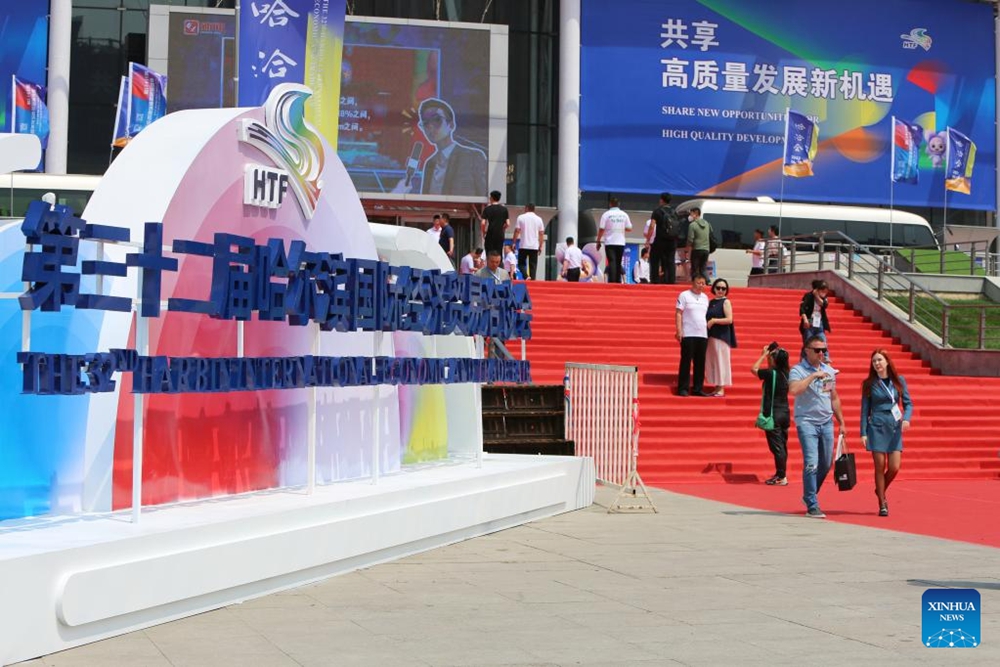Trade fair bolsters int'l businesses in NE China

Over 1,400 enterprises from 38 countries and regions and 21 provincial-level regions in China participated in the event. The fair has a total exhibition area of 360,000 square meters across its main venue and three smaller venues. (Xinhua/Shi Feng)
As the 32nd Harbin International Economic and Trade Fair concluded on Monday in Harbin, the capital city of northeast China's Heilongjiang Province, new vitality has been injected into the international economic exchange in Northeast Asia.
Gathering around the booth of Hokkaido, Japan, the visitors were attracted by the various products on display, including snacks and condiments.
"We have brought 52 types of products here this year, all crafted with top-tier material and craftsmanship, featuring the taste of Hokkaido," said Yuki Osanai, senior staff of the Office of International Business, Bureau of Economic Planning, Hokkaido Government.
Known for its rich history and abundant natural resources, Hokkaido has been attending the Harbin International Economic and Trade Fair since 2016, said Osanai. "I expect more Chinese visitors to travel to Hokkaido and taste our special delicacies after this exhibition."
Starting on June 15, this year's trade fair has attracted nearly 1,400 companies from 38 countries and regions, including the Republic of Korea (ROK), Japan, and Australia, bringing new partners and opportunities to foreign corporations.
Choi Seung Myung from Gangwon Province of ROK is among the new "partners" introduced to the event.
As the chief representative of the Beijing Representative Office for Gangwon Province, Choi has been following the development of the fair for years.
"Although this is the first time for us to come as exhibitors, many of our enterprises are already familiar with this event concerning the central position of Harbin connecting countries in Northeast Asia," Choi said.
This year, according to Choi, over 120 product types from Gangwon Province were showcased at the trade fair, ranging from organic food to cosmetic products.
"Cosmetics and biomedicine are the main industries of Gangwon Province," said Choi. "After we arrived in Heilongjiang, we discovered a strong demand for Korean merchandise here."
"We hope to take this exhibition as an opportunity to open up the vast Northern China market for our enterprises," Choi added.
Like Choi, many foreign entrepreneurs and representatives are amazed by the growth and possibilities of the Chinese market through this event.
Standing before the booth of Niigata Prefecture, Japan, Yoshito Nariyama was busy introducing Niigata-produced rice and ironware to the visitors.
"As this year marks the 40th anniversary of the twin relationship between Heilongjiang Province and Niigata Prefecture, many companies in Niigata are interested in coming here for business," said Nariyama, an official of the office for international affairs of Niigata Prefectural Government.
First held in 1990, the trade fair had seen nearly 3 trillion yuan (about 420 billion U.S. dollars) worth of deals inked over the decades.
According to the fair's organizer, the province has inked over 224 cooperation projects with domestic and overseas enterprises during this year's event. It is estimated that the total amount of contracts will exceed 200 billion yuan.